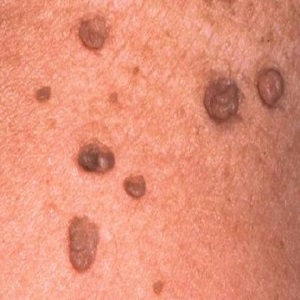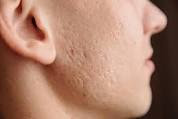**Skin Tags: Understanding, Treating, and Removing the Common Skin Anomaly**
Skin tags, those small, fleshy growths that protrude from the skin's surface, are a common yet often misunderstood skin anomaly. While they are generally harmless, skin tags can be bothersome or unsightly for some individuals. In this comprehensive blog, we'll explore everything you need to know about skin tags, including their causes, characteristics, treatment options, and when to seek medical advice.
**What Are Skin Tags?**
Skin tags, medically known as acrochordons or fibroepithelial polyps, are benign growths that typically appear as small, soft protrusions of skin. They often have a narrow stalk, or peduncle, and can vary in size from a few millimeters to several centimeters. Skin tags are commonly found in areas where the skin rubs against itself or clothing, such as the neck, armpits, groin, and eyelids, but they can occur anywhere on the body.
**Causes and Risk Factors:**
While the exact cause of skin tags is not fully understood, several factors may contribute to their development, including:
1. **Friction:** Skin tags often form in areas where the skin rubs against itself or clothing, leading to irritation and the formation of small growths.
2. **Hormonal Changes:** Fluctuations in hormone levels, such as those that occur during pregnancy or with hormonal imbalances, may increase the risk of developing skin tags.
3. **Genetics:** There may be a genetic predisposition to developing skin tags, as they often run in families.
4. **Obesity:** Being overweight or obese may increase the likelihood of developing skin tags, as excess skin folds and friction can contribute to their formation.
While anyone can develop skin tags, certain individuals may be at higher risk, including older adults, pregnant women, and those with certain medical conditions such as diabetes or human papillomavirus (HPV) infection.
**Characteristics of Skin Tags:**
Skin tags are typically:
1. **Soft and Flesh-Colored:** Skin tags are usually soft to the touch and flesh-colored or slightly darker than the surrounding skin.
2. **Small and Painless:** Most skin tags are small, ranging in size from a few millimeters to several centimeters, and are generally painless, although they may become irritated if rubbed or snagged on clothing or jewelry.
3. **Attached by a Narrow Stalk:** Skin tags often have a narrow stalk or peduncle that attaches them to the skin's surface, giving them a mushroom-like appearance.
4. **Commonly Found in Skin Folds:** Skin tags tend to occur in areas where the skin folds or creases, such as the neck, armpits, groin, and eyelids.
**Treatment Options for Skin Tags:**
While skin tags are generally harmless and may not require treatment, some individuals may choose to have them removed for cosmetic reasons or if they become irritated or bothersome. Several treatment options are available for removing skin tags, including:
1. **Excision:** Surgical excision involves cutting the skin tag off with a scalpel or surgical scissors. This procedure is typically performed under local anesthesia and may result in minimal scarring.
2. **Cauterization:** Cauterization involves burning the skin tag off using a heated probe or electrical current. This method may be effective for smaller skin tags but can cause discomfort and may result in scarring.
3. **Cryotherapy:** Cryotherapy involves freezing the skin tag using liquid nitrogen. This causes the skin tag to shrink and fall off over time. Cryotherapy is a quick and relatively painless procedure but may require multiple sessions for optimal results.
4. **Ligation:** Ligation involves tying off the blood supply to the skin tag using a small band or thread. This cuts off circulation to the skin tag, causing it to wither and fall off over time.
5. **Topical Treatments:** Some over-the-counter topical treatments, such as creams or solutions containing salicylic acid or tea tree oil, may help shrink and dissolve small skin tags over time.
**When to Seek Medical Advice:**
While skin tags are generally harmless, there are certain situations where it's important to seek medical advice, including:
1. **Changes in Appearance:** If a skin tag changes in size, shape, color, or texture, or if it becomes painful, swollen, or inflamed, it may be a sign of a more serious skin condition and should be evaluated by a healthcare professional.
2. **Bleeding or Discharge:** If a skin tag bleeds, oozes fluid, or develops a foul odor, it may be infected or irritated and should be assessed by a healthcare provider.
3. **Difficulty with Removal:** Attempting to remove a skin tag at home using scissors, knives, or other sharp objects can lead to infection, scarring, and other complications. It's best to leave skin tag removal to trained healthcare professionals to ensure safe and effective treatment.
**Conclusion:**
Skin tags are a common and generally harmless skin anomaly that can occur in individuals of all ages and skin types. While they may be bothersome or unsightly for some individuals, skin tags are usually benign and do not require treatment unless they become irritated, inflamed, or cosmetically undesirable. If you're considering removing a skin tag, it's important to consult with a healthcare professional to determine the most appropriate treatment option for your individual needs. With proper care and attention, you can manage skin tags effectively and maintain healthy, radiant skin for years to come.
Call now
on our Mobile 8669086098 to book an appointment
Kindly visit our website Derma Solutions to know more.




Comments
Post a Comment